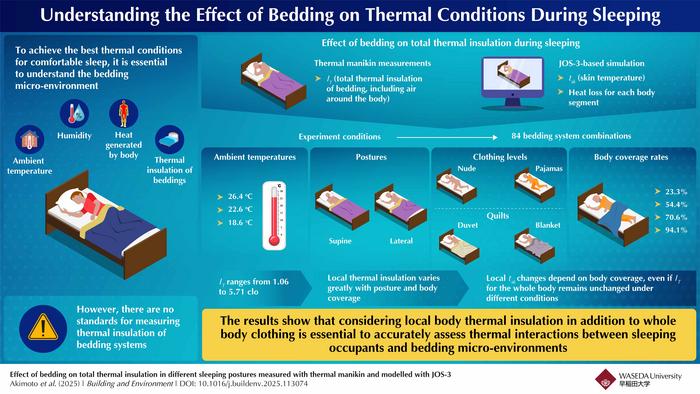The quality of sleep is profoundly influenced by our sleeping environment, making it a crucial element impacting overall health and well-being. Among the various components of this environment, bedding plays a central role in creating a thermally comfortable space for rest. It is essential to comprehend the micro-environment created by the bedding system, which encompasses elements such as ambient temperature, humidity, the heat emanated from the human body, as well as the thermal insulation properties of blankets, quilts, sheets, and other bedding materials. While the significance of sleep and its effects on health cannot be overstated, there remains a notable lack of standardized measurement criteria for assessing the thermal insulation provided by different bedding systems.
The inherent ability of bedding materials to resist heat flow, often referred to as total thermal insulation, drastically influences the thermal neutral temperature of the sleep environment. This concept pertains to the ambient temperature range within which the human body can maintain its thermal equilibrium without the need to expel excess heat through sweating or generate additional heat through shivering. Despite its pivotal importance in ensuring a restful night’s sleep, prior research has largely neglected the localized thermal conditions of various body parts while focusing predominantly on the body as a unified entity. This oversight touches a vital aspect of sleep physiology, as the body’s response to temperature varies across different segments.
Recent efforts led by a remarkable research team at Waseda University aim to fill this knowledge void. The research, spearheaded by Mizuho Akimoto and supported by a one-of-a-kind cadre of experts, seeks to explore a comprehensive understanding of the thermal insulation properties of bedding systems. Their systematic examination ventures beyond traditional approaches, assessing not only the total thermal insulation for the entire body but also the specific local thermal conditions relevant to individual body portions. This nuanced inquiry hinges on the idea that sleeping posture and how much of the body is covered by bedding can be highly variable during sleep. Thus, it becomes imperative to evaluate thermal insulation in conjunction with these factors.
This pioneering study utilized empirical methodologies involving a heated thermal manikin paired with sophisticated thermal regulatory simulation models. The research team meticulously constructed an experimental design where they assessed an impressive array of variables, including diverse combinations of bedding configurations, types of sleepwear, and variations in body posture. In total, 84 unique conditions were analyzed within a controlled climate chamber, comprising different degrees of coverage, postures, and ambient temperatures set at scientifically recommended levels. The use of a manikin enables precise measurements while simulating the interactions experienced by a real human body undergoing sleep.
Measurements were rigorously conducted to assess the total thermal insulation provided by various bedding systems, incorporating not only the materials but also considering the air layer enveloping the body. The experimental results revealed significant variability in thermal insulation values, ranging from a modest 1.06 to a substantial 5.71 clothing insulation units (clo). These findings underscore the importance of both the choice of bedding materials and the contextual factors of body coverage and positioning in influencing sleep comfort.
An intriguing aspect of the research lies in the utilization of advanced simulation techniques, particularly the JOS-3 human thermoregulation model. While the manikin’s capabilities do not include simulating physiological responses such as perspiration, the research team ingeniously employed the JOS-3 model to bridge this gap. By inputting the manikin’s measurements, they could simulate how sweating and varying coverage affect heat loss and skin temperature across different body segments. These simulations revealed a fascinating insight: the total thermal insulation of the entire body could remain unchanged, yet the local skin temperature could differ markedly based on the anatomical locations covered or in contact with the bedding surface.
The implications of this research extend far beyond academic inquiry; the findings serve as a foundation for improving sleep quality and, by extension, fostering a healthier population. As Akimoto posits, relying solely on overall thermal insulation may be inadequate. There exists a pressing need to develop new methodologies that emphasize both whole-body and localized thermal responses. Such innovative frameworks could revolutionize how we optimize sleep environments, catering to individual anatomical variations and responses to temperature, thus enhancing overall well-being.
By circumventing the established paradigms in sleep science, this research sheds light on potential strategies to mitigate discomfort related to overheating during sleep. It envisages a future where bedding systems and sleep environments are tailored to individual needs, accommodating different postures, covering styles, and materials. The benchmarks set forth in this study invite further exploration and refinement of multi-segmental human thermoregulatory models, empowering researchers and practitioners to predict thermal physiological responses effectively during sleep and potentially avert sleep-related heat stress.
In conclusion, the insights garnered from this cutting-edge investigation into the thermal insulation properties of bedding systems hold the promise of transforming our understanding of sleep science. By addressing the nuanced interactions between bedding materials, sleepwear, body posture, and ambient conditions, this research endeavors to unravel the complex dynamics underpinning sleep quality. Such knowledge is vital for individuals seeking restful nights and enhanced wellness in our ever-evolving societal landscape, where the importance of health and well-being remains at the forefront of our shared consciousness.
Subject of Research: Examination of thermal insulation properties of bedding systems in relation to sleep quality
Article Title: Effect of bedding on total thermal insulation in different sleeping postures measured with thermal manikin and modelled with JOS-3
News Publication Date: July 1, 2025
Web References: Building and Environment Article
References:
Image Credits: Research Associate Mizuho Akimoto, Waseda University
Keywords
Sleep, Thermal Insulation, Bedding Systems, Human Thermoregulation, Sleep Quality, Heat Stress, Experimentation, Health and Medicine, Body Temperature Regulation, Environmental Engineering, Neuroscience.




